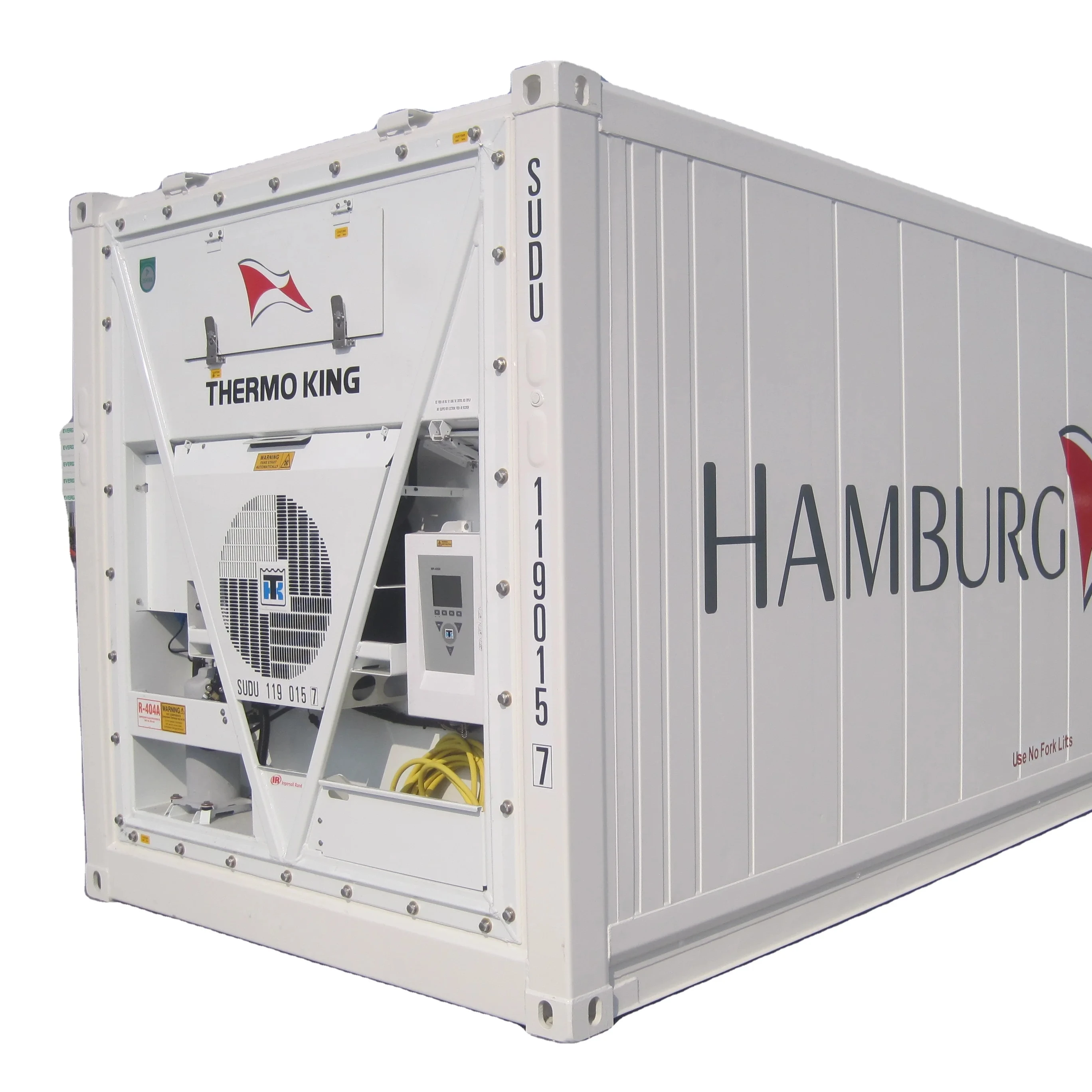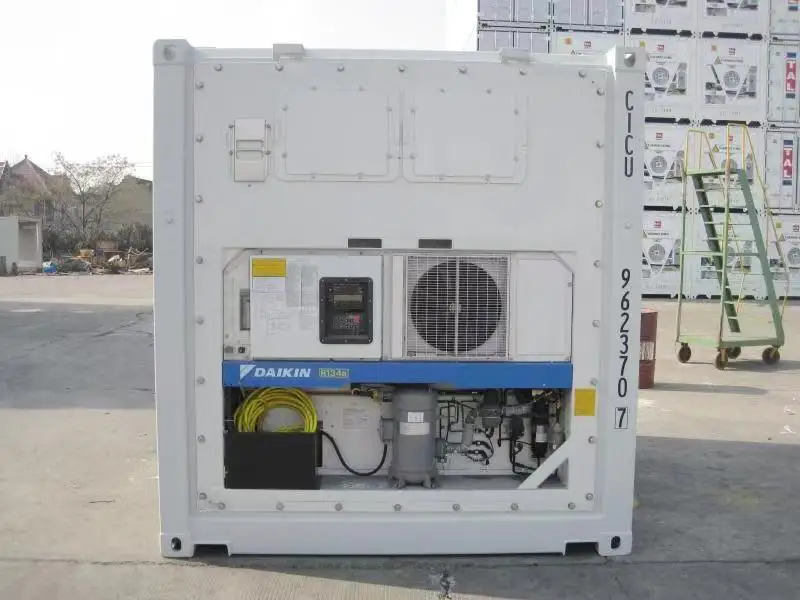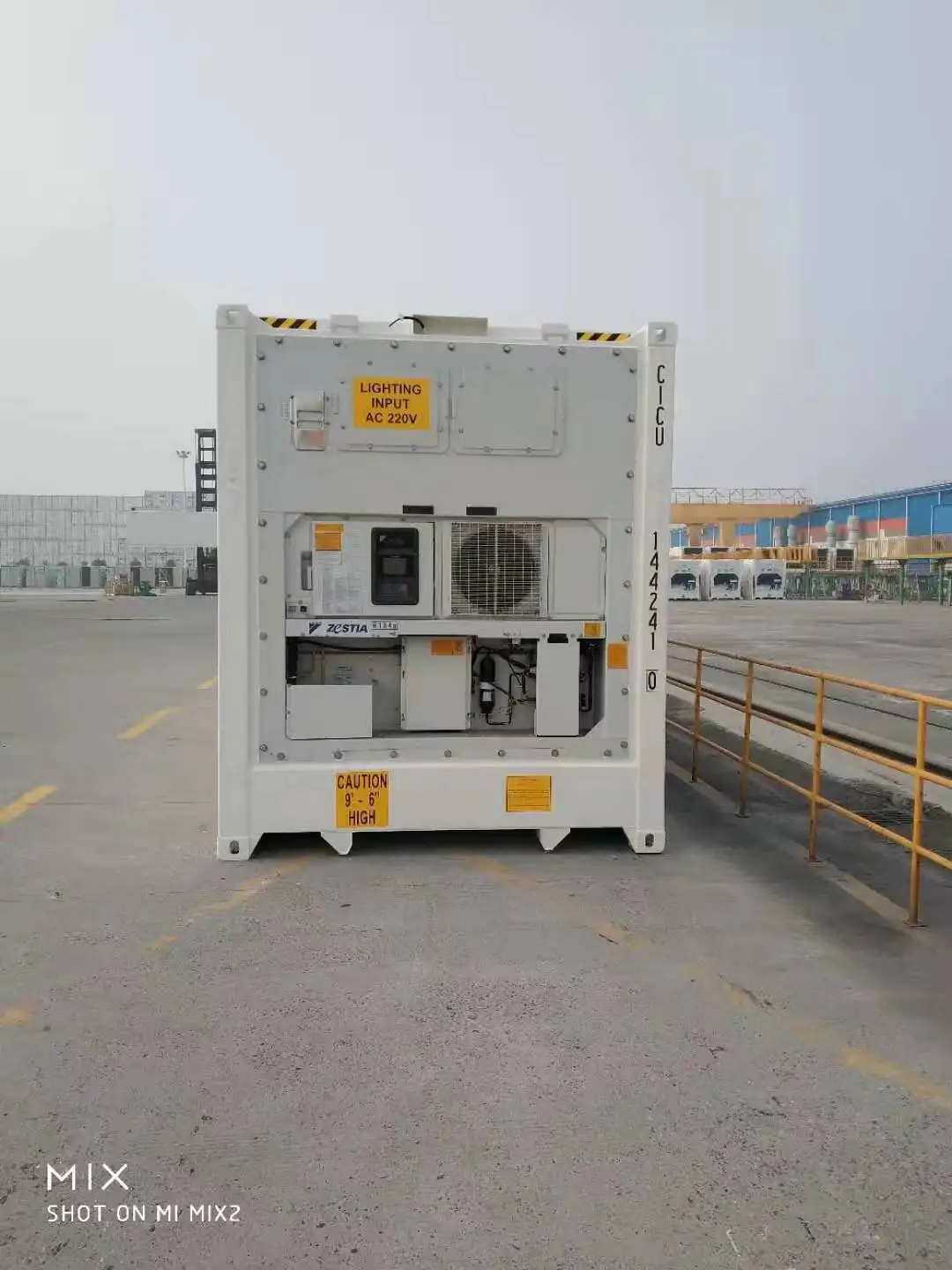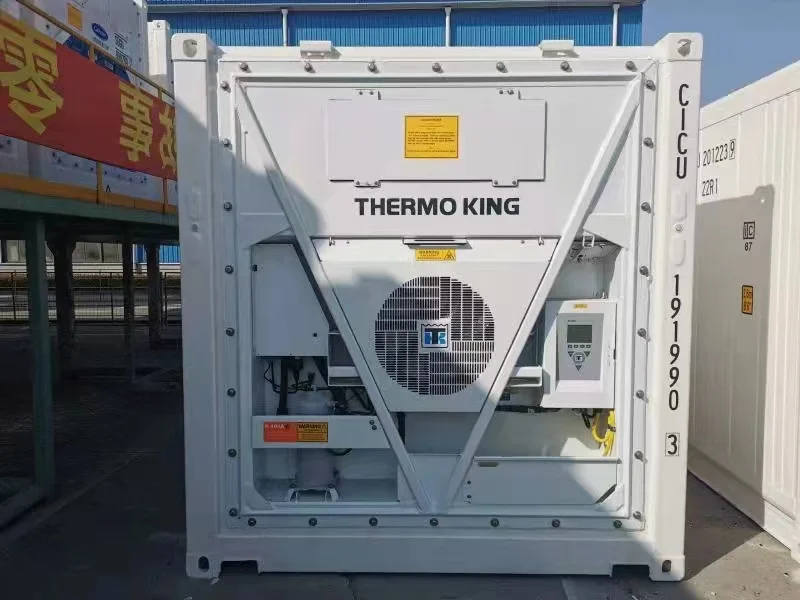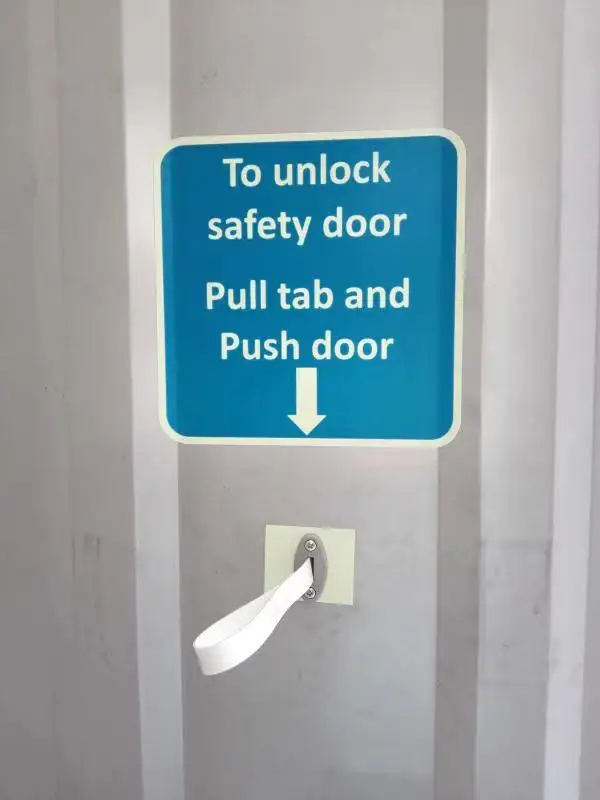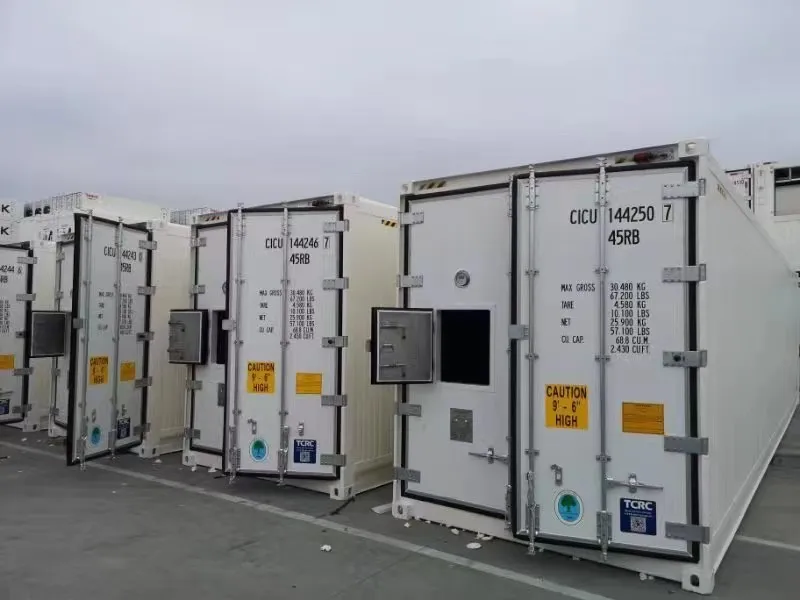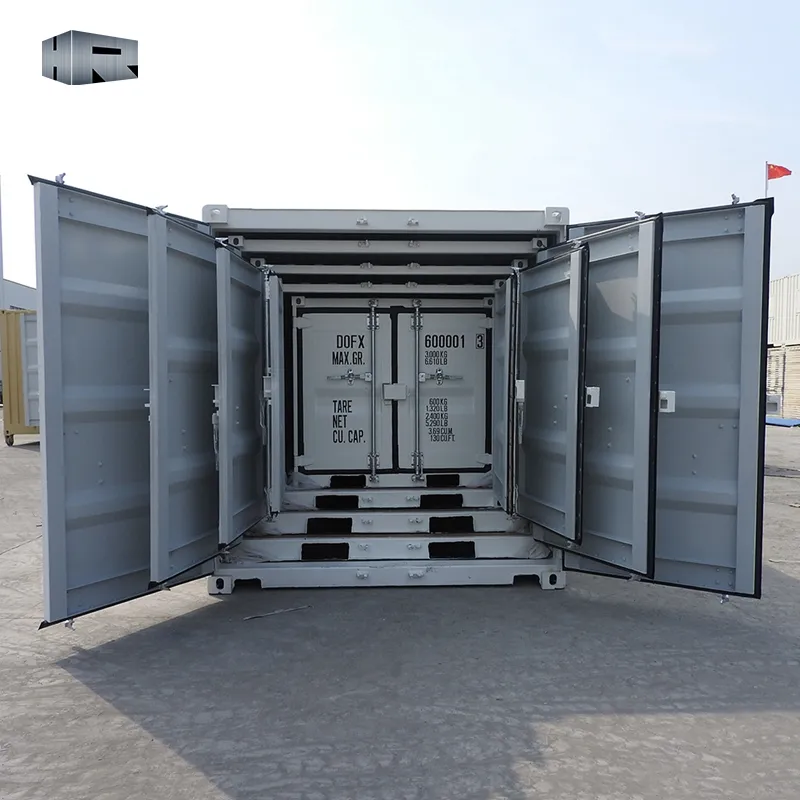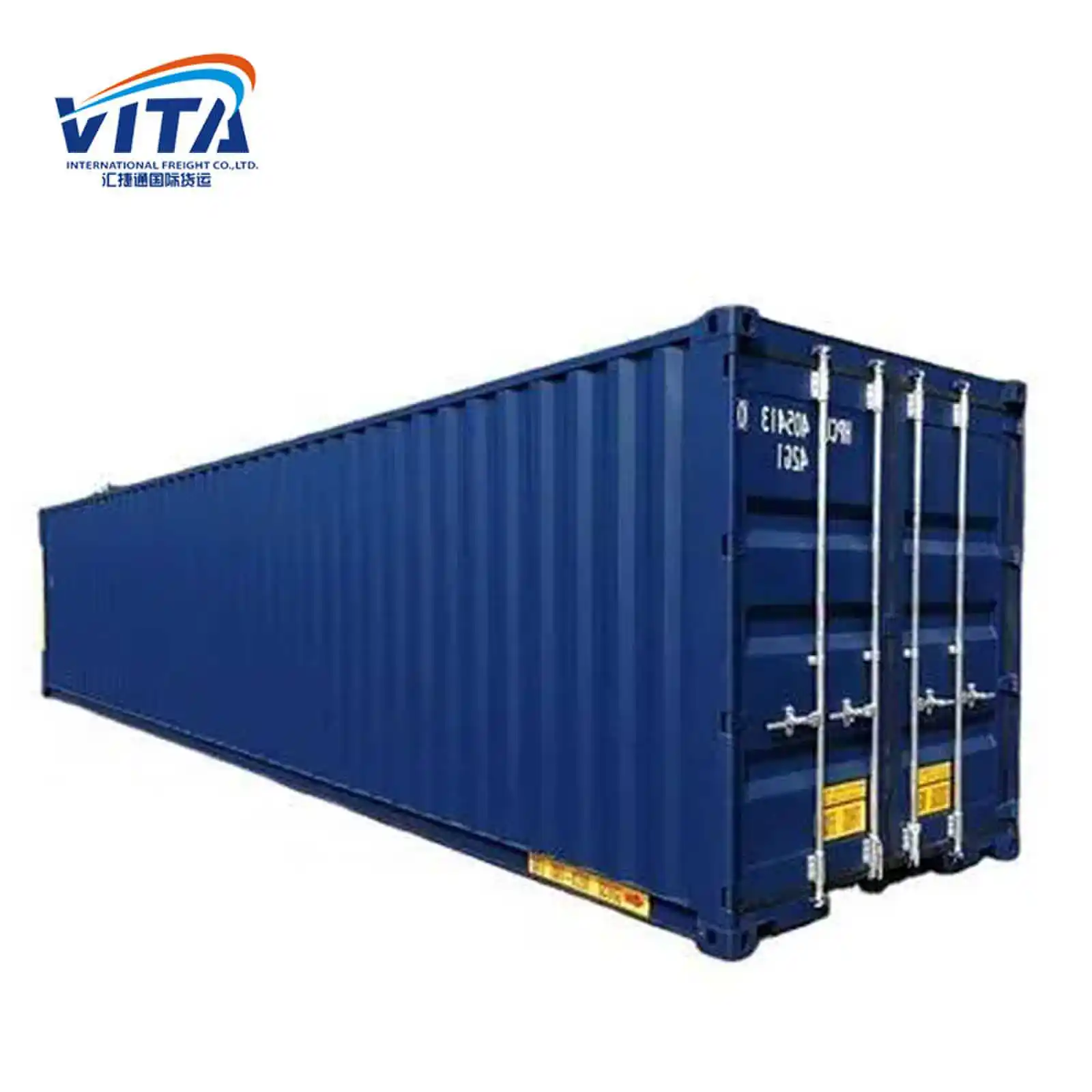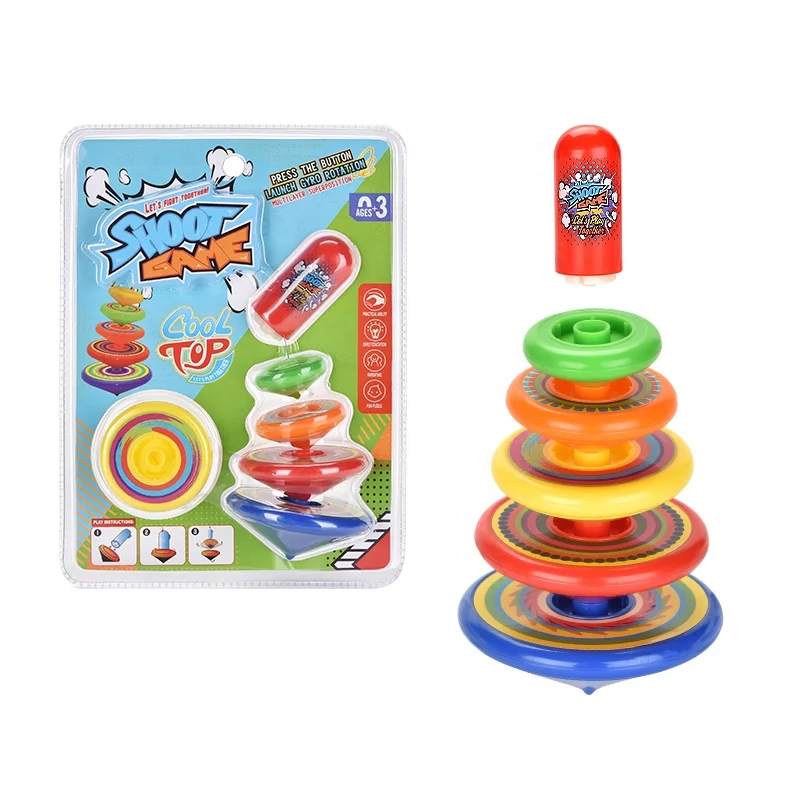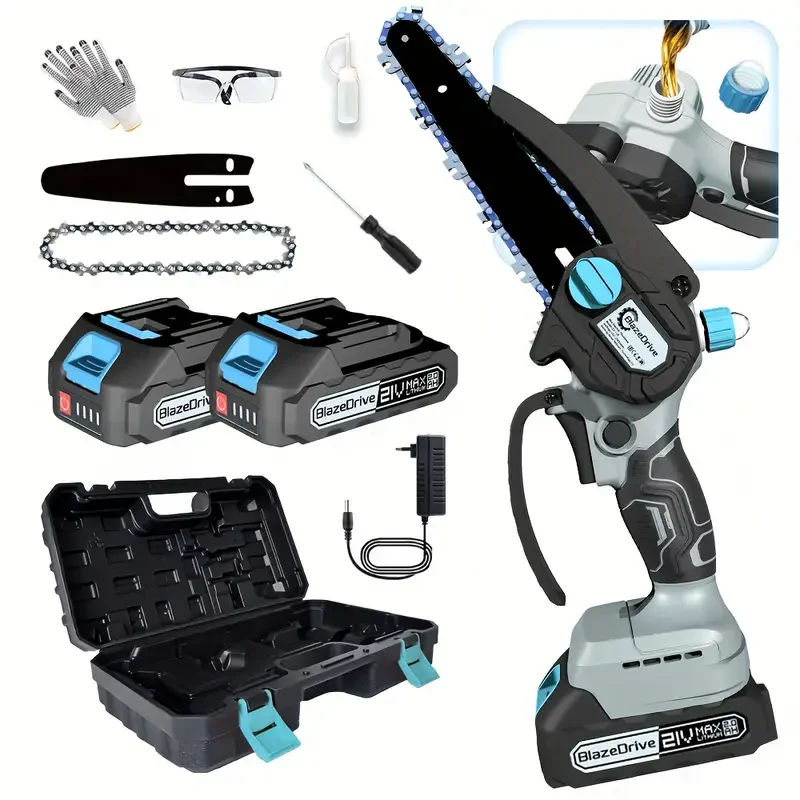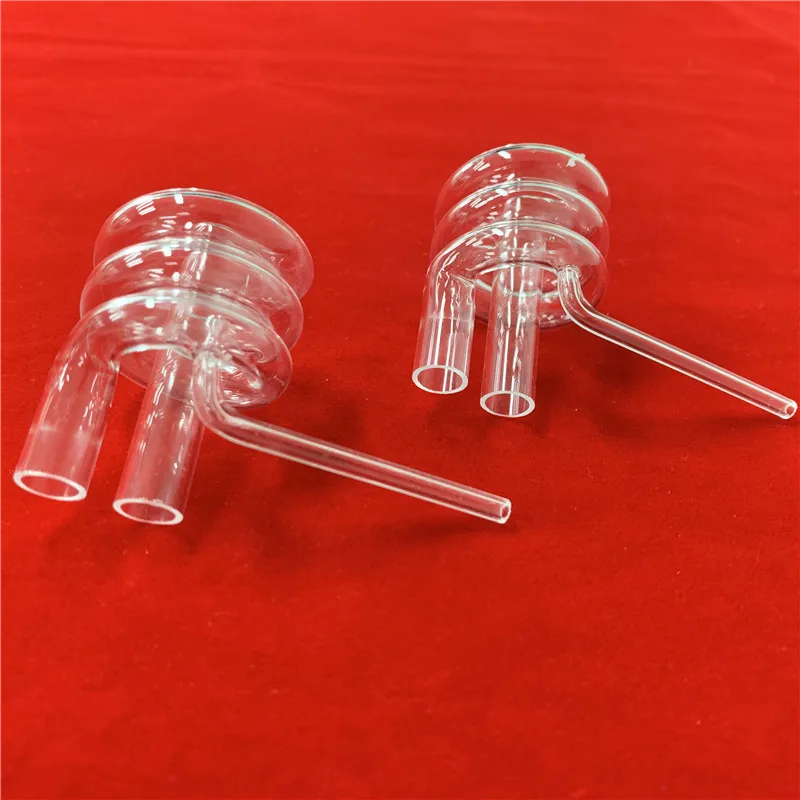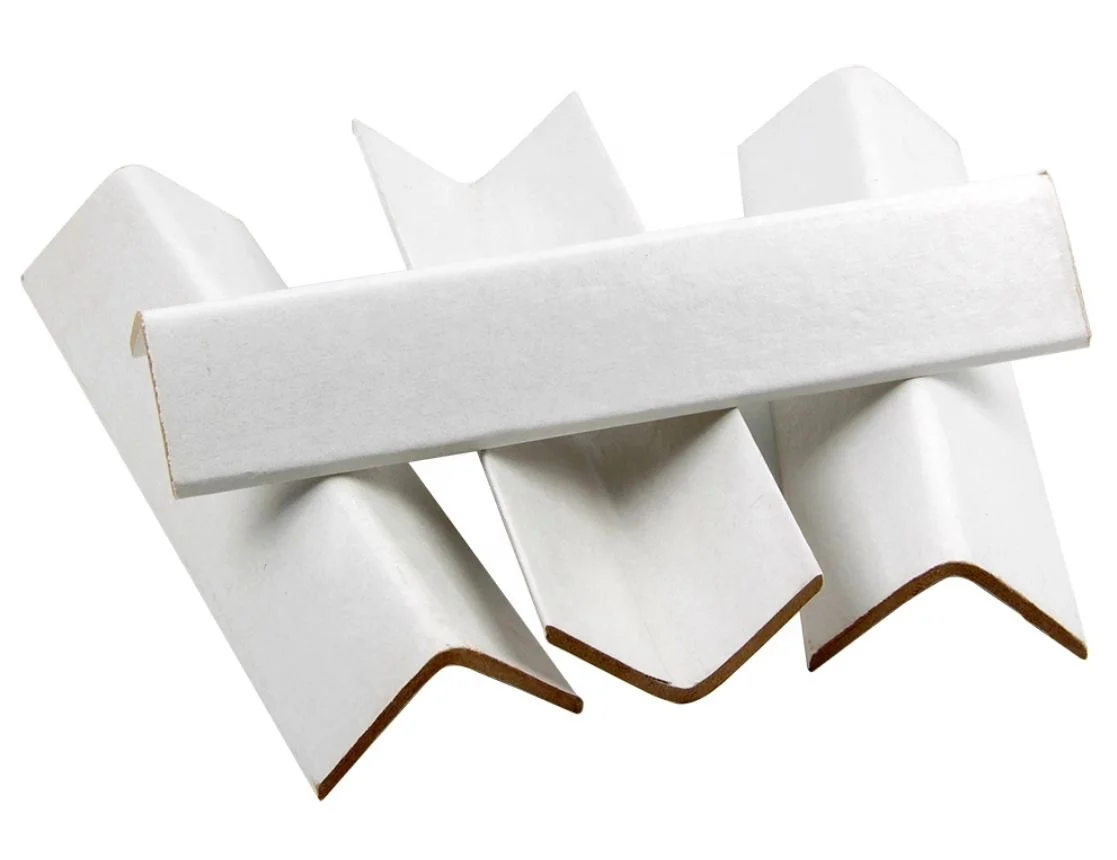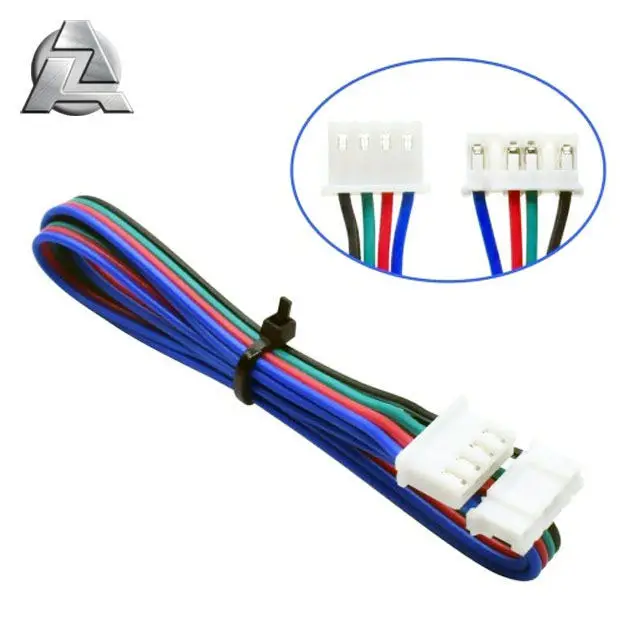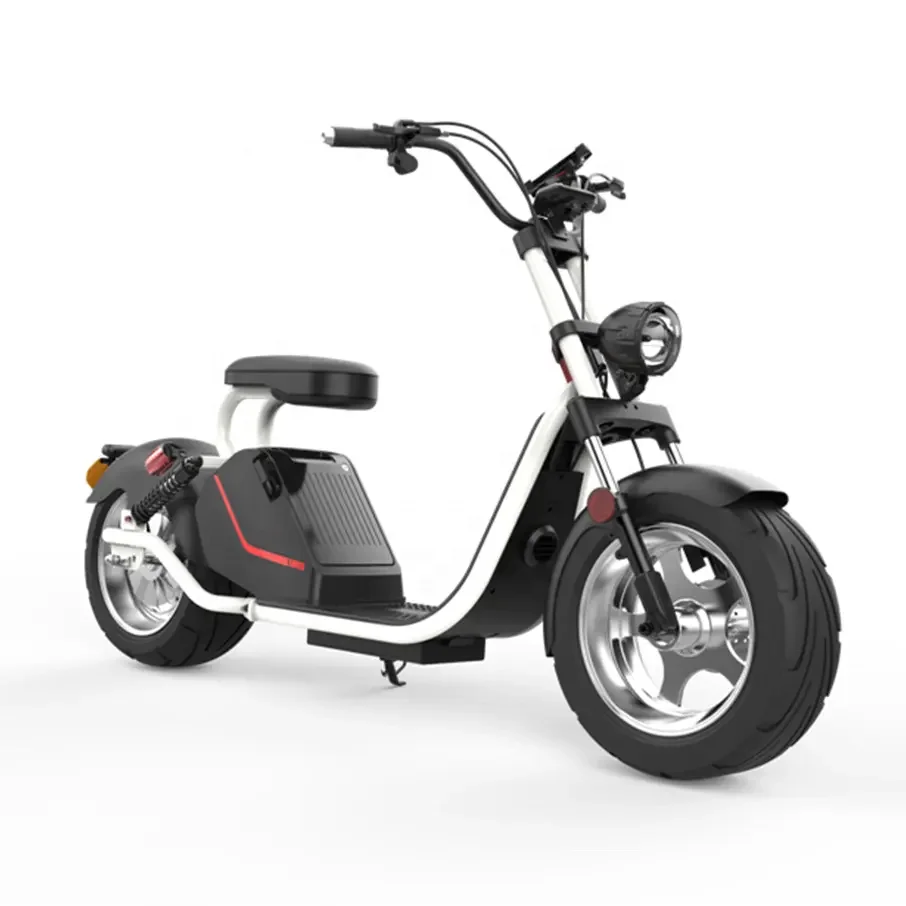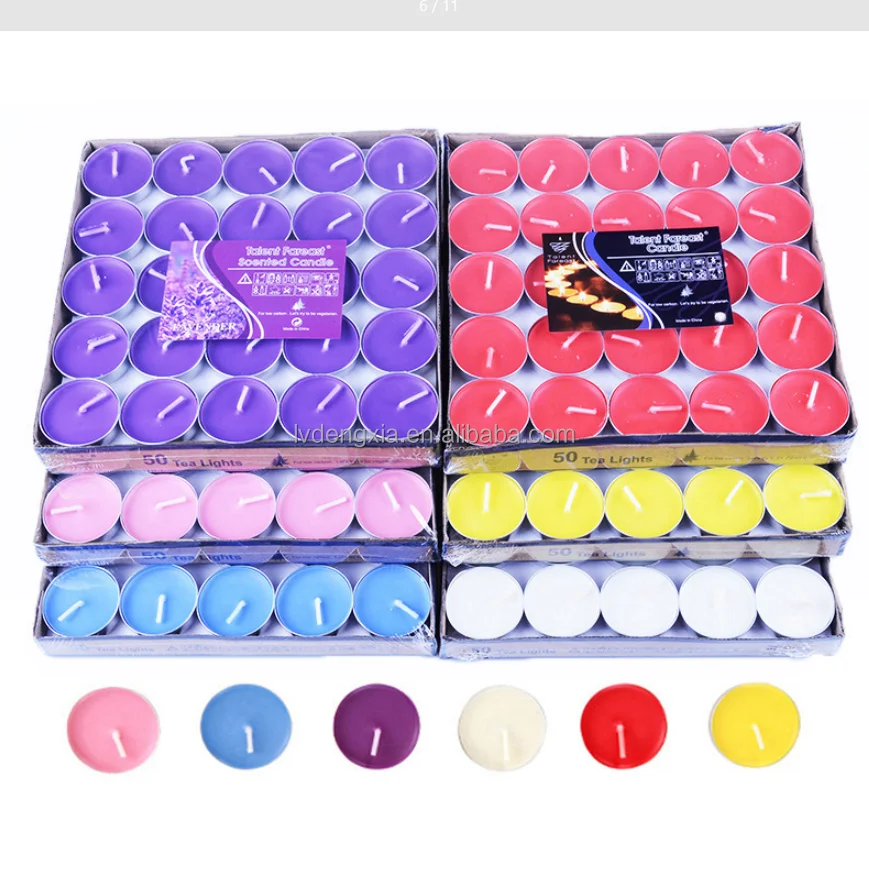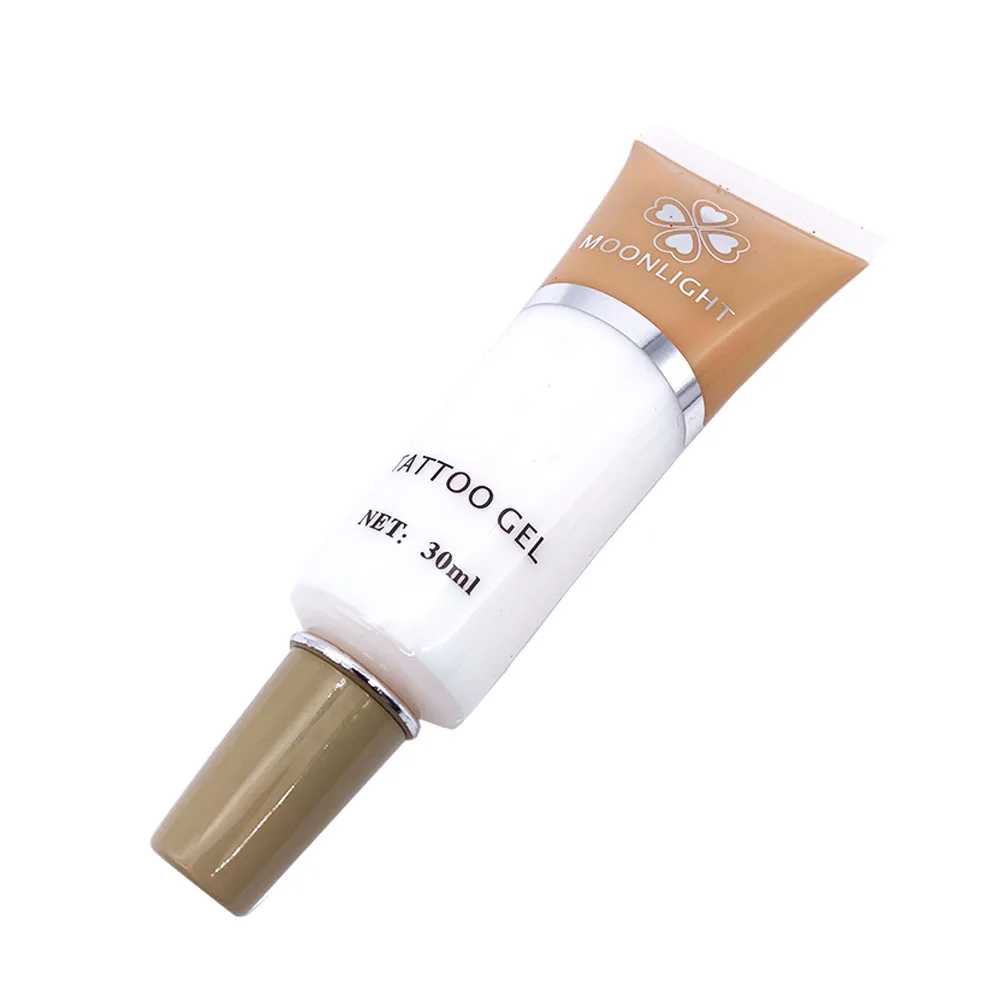Customized High Cube Special Purpose Shipping Container Reefer Shipping Containers with diesel generator
- Category: >>>
- Supplier: Tianjin Cimic Imp& Exp Co. ltd.
Share on (1601053313997):
Product Overview
Description
Product Description
Reefer container is short for refrigerated container. By definition, a reefer container is a shipping container which is equipped with a generator which cools the content of the container.It is a type of shipping container that maintains a regulated cool temperature through a mix of insulation and powered cooling, to carry temperature-sensitive products. Essentially serving as a large refrigerator, reefer containers typically sustain a temperature range of -40°C and +30°C. From transporting fresh produce to playing a vital role in disaster management, there are many uses for a cold container.

Interior fans: Interior fans are installed inside the refrigerated container and help spread air to promote adequate temperature control and stability.
Control unit: The control unit sets and adjusts the internal climate of the reefer container, including the temperature, alarm conditions, and in some cases, ventilation and humidity levels.
Fresh air vent: The fresh air vent hole lets air enter from outside, and any gases from the container, such as fruit-ripening ethylene gas, can leave.
Unit evaporator: Excess moisture in a reefer can harm products, quicken food spoilage and break down packaging, leaving contents vulnerable. The unit evaporator helps preserve the humidity inside the container. The reefer unit evaporator can either heat or cool the air that circulates past it from the fan. Heating capacity is using either hot gas heat or electrical heating elements.
Condenser: Air-cooled models pull cooled air from the top of the container and discharge it under the cargo, pushing the air to the back doors before it convects naturally and rises, flowing back over the load to the return air inlet on the reefer unit. Because air moves under the cargo, proper loading and covering as much of the floor as possible is critical to prevent a “chimney” effect and short cycling.
Voltage transformers: Dual voltage transformers are also an option with some containers, allowing operation on
voltages down to 200V.
voltages down to 200V.



Specification
Item | Value |
Type | Reefer Container |
Length (feet) | 10'20'40' |
Capacity | 67.4 |
External Dimensions(l x W x H)(mm) | 12192x2438x2896 |
Internal Dimensions(l x W x H)(mm) | 11590x2294x2554 |
Brand Name | CIMIC |
COOLING UNIT | Daikin Thermo King Carrier |
Roof lining Lining front top & sid | 5052-H46 |
Door & side lining | BN4 |
Generator fitting nut | SUS304 |
Floor rail & Floor stringer Door frame | 6061-T6 |
Door locking gear | Forged steel HDG |
Door hinge | SS41 HDG |
Rear corner post inner | SS50 |
Insulation tape | Electrolytic buffer of P.E. or P.V. |
Foam tape | Adhesive of P.V.C |

CIMC can design& build ISO 6 to 58' and other special reefer containers.
Product Application

Company Profile
TIANJIN CIMIC IMP AND EXP LTD, established in 2018 , is a professional engaged in the research, development, sale and service of Logistic equipment, such as shipping containers,semi trailers and all kinds of trucks. We are located in Tianjin city and Suzhou city, with convenient transportation access, which is only 100km to the seaport. Dedicated to strict quality control and thoughtful customer service, our experienced staff members are always available to discuss your requirement and ensure full customer satisfaction. In addition, we have obtained BV shipping certificate and ISO quality certificates. Our annual export value is 3 million Dollars. Our products are exported to all over the world, mainly market is Africa Europe and America. We also welcome OEM and ODM orders. Whether selecting a current product from our catalog or seeking engineering assistance for your application.
CIMIC as a preferred supplier, provide first-class reefer logistics equipment and top-class service, as well as solutions for the modern logistics equipment in the global market;
CIMIC pays attention to the construction of internal control system and passed the ISO9001 certification. ALL the production processes including the design, procurement, manufacture, test, storage, transportation, after-sales service etc. are strictly controlled, and keep long term close cooperation relationship with BV,ABS,CCS and GL classification society, and KCC, Kansai Chugoku paint suppliers, to ensure provide customers with best quality products and services.



Packing & Delivery
To better ensure the safety of your goods, professional, environmentally friendly, convenient and efficient packaging services will be provided.



FAQ
Q1:How does a reefer container work?
A1:Reefer containers have a refrigerated unit on one end. They work by allowing air to circulate around the container, keeping it at a constant temperature. Reefers can maintain any temperature between -30°C and +30°C.
Q2:Can we choose the cooling unit?
A2:Sure, you could choose one from Thermo King,Daikin and Carrier.
Q3、What is your Classification societies?
A3: A.B.S (U.S.A.)、B.V (France)、G.L (Germany)、C.C.S China Classification Society (P.R.C.)、K.R Korean of Shipping (Korea) and L.R Lloyd’s Register (Britain).
Q4:Can we print our Logo on cartainers?
A4:Yes u can design and painting your logo as your request.
Q5:What is the payment terms that you can accept?
A5:Generally T/T 50% deposit before producation and 50% before shipment.Other payment terms please contact me for more details.
Q6: What's your MOQ?
A6: 1 piece for 20ft super freezer container.
A1:Reefer containers have a refrigerated unit on one end. They work by allowing air to circulate around the container, keeping it at a constant temperature. Reefers can maintain any temperature between -30°C and +30°C.
Q2:Can we choose the cooling unit?
A2:Sure, you could choose one from Thermo King,Daikin and Carrier.
Q3、What is your Classification societies?
A3: A.B.S (U.S.A.)、B.V (France)、G.L (Germany)、C.C.S China Classification Society (P.R.C.)、K.R Korean of Shipping (Korea) and L.R Lloyd’s Register (Britain).
Q4:Can we print our Logo on cartainers?
A4:Yes u can design and painting your logo as your request.
Q5:What is the payment terms that you can accept?
A5:Generally T/T 50% deposit before producation and 50% before shipment.Other payment terms please contact me for more details.
Q6: What's your MOQ?
A6: 1 piece for 20ft super freezer container.
Recommend Products

We Recommend
New Arrivals
New products from manufacturers at wholesale prices
